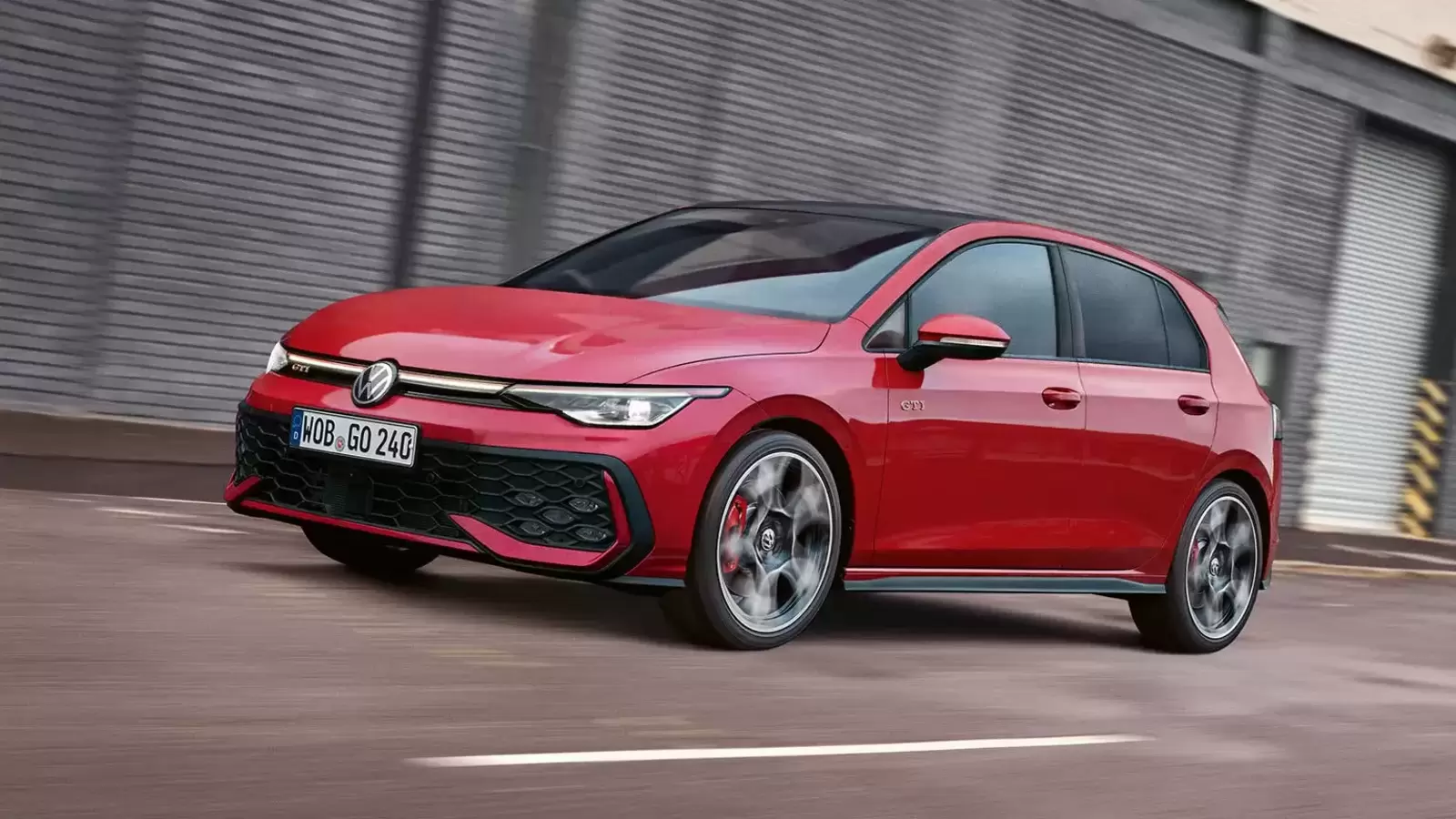24 April 2025

Total new-vehicle sales, including retail and non-retail transactions, are projected to improve this April. But how have tariffs impacted this result? In its latest forecast, J.D. Power outlines its market expectations.
Total new-vehicle sales are expected to increase by 10.5% year on year in April 2025. This equates to the registration of 1,519,897 units. There are 26 selling days in the month this year, one more than April 2024. Comparing the same sales volume without adjusting for the number of selling days translates to an increase of 14.9% year on year.
The seasonally-adjusted annualised rate (SAAR) for total new-vehicle sales is expected to be 17.9 million units. This is up by 1.9 million units from April 2024.
Retail sales of new vehicles are expected to reach 1,284,826, a 14.7% increase from the same month last year. Comparing the same sales volume without adjusting for the number of selling days translates to an increase of 19.3% from 2024.
Tariffs loom large
‘April results are dominated by the prospect of future vehicle price increases due to tariffs,’ said Thomas King, president of the data and analytics division at J.D. Power.
‘Beginning at the end of March, and continuing through April, consumers have been accelerating their vehicle purchases under the expectation that prices will rise soon. An extra 83,000 sales in March and 139,000 in April have occurred due to accelerated vehicle purchases,’ he highlighted.
However, multiple carmakers have committed to keep the manufacturer’s suggested retail price (MSRPs) stable through the early summer months. Meanwhile, uncertainty about tariffs has also persisted.
Sales pace slows
This uncertainty has meant the rush to dealer showrooms has slowed significantly. In the first week of April, the sales pace was 28% above normal levels, but by the third week, figures were just 6% above normal. In showrooms, shoppers are now finding deals that are comparable to recent months. However, discounts from manufacturers and dealers have moderated slightly.
The average manufacturer incentive spend per vehicle is on track to reach $2,808 (€2,466). This is down by $260 from March, but up by $209 from one year ago. Expressed as a percentage of MSRP, incentive spending is currently at 5.6%, an increase of 0.3 percentage points (pp) from 12 months previously.
Given the rush to showrooms, dealers are offering slightly smaller discounts, resulting in higher retailer profits. Including vehicle gross plus finance and insurance income, total retailer profit per unit is expected to be $2,525. This is similar to April 2024, but up $361 from March. Total aggregate retailer profit from new-vehicle sales for this month is projected to be $3.1 billion, up 18.8% from April 2024.
‘The moderation of discounting from manufacturers and dealers means the average transaction price for new vehicles has risen. The average new-vehicle retail transaction price in April is expected to reach $45,764, up $887 from April 2024, and up $975 from March.
‘The strong sales pace, combined with high average transaction prices, mean consumers will spend more money buying new vehicles this month than any other April on record. It will also be the third highest of any month on record. Consumers are on track to spend nearly $55.8 billion on new vehicles this month, 21.2% higher than a year ago,’ King explained.
High prices and loan repayments
Higher prices translate to higher monthly loan payments. Average monthly finance payments in April are on track to reach $742, an increase of $19 from April 2024. This is the highest on record for the month of April. The average interest rate for new-vehicle loans is 6.8%. This equates to an 18-basis-point decrease from a year ago (one basis point is equal to 0.01%).
Fleet sales are projected to decline 7.8% from a year ago, as manufacturers continue to prioritise retail buyers over the historically less profitable fleet channel.
‘The average used-vehicle price is trending towards $28,725, up $200 from a year ago. This reflects the combination of reduced supply of recent model-year used vehicles, due to lower new-vehicle production during the pandemic, fewer lease maturities and manufacturers moderating discounts,’ King highlighted.
An increase in used-vehicle prices means that average trade-in equity is expected to rise slightly. This will climb by $328 year on year to $8,313. Currently, 23.3% of trade-ins carry negative equity, a decrease of 0.2pp from April 2024.
Intrinsic effect of tariffs
‘The strong volume and value of vehicles sold in April will be difficult for the industry to maintain. The potential for price increases in the coming months is meaningful and, if realised, will reduce the industry’s sales pace. Furthermore, the large number of buyers who purchased in late March and April instead of later in the year will create a further sales headwind in the coming months,’ King said.
‘However, the timing and magnitude of these effects are intrinsically linked to tariffs, which remain fluid, and the subsequent response of manufacturers to those tariffs. The cost effect of tariffs that are currently in place or announced vary significantly between manufacturers, models and vehicle segments.
‘Given this variation, coupled with the highly competitive nature of the auto industry, it is likely that tariff-related price increases will take several months to fully manifest themselves,’ he added.
The vehicle details
- Fleet sales are expected to total 235,071 units in April, down 7.8% from April 2024. Fleet volume is expected to account for 15.5% of total light-vehicle sales, down 3.1pp from a year ago.
- Internal-combustion engine vehicles are projected to account for 76.1% of new-vehicle retail sales, a decrease of 3.8pp from a year ago.
- Full-hybrid sales are expected to reach 12.6%, an increase of 2.9pp from a year ago.
- Plug-in hybrid vehicles are on pace to make up 2.3% of sales, gaining 0.4pp from last April.
- Electric vehicles (EVs) are expected to account for 8.7% of sales, up 0.2pp from a year ago.
- US final assembly vehicles are expected to make up 51.8% of sales in April, unchanged from a year ago.
- Trucks and SUVs are on pace to account for 82.1% of new-vehicle retail sales, up 2.5pp from April 2024.
The retail details
- Retail inventory levels are currently at 2.15 million units, a 21.4% increase from April 2024.
- 59.5% of sales had positive vehicle gross, up 0.3pp from a year ago.
- The average new-vehicle retail transaction price in April is expected to reach $45,764, up $887 from April 2024. Transaction price as a percentage of MSRP held steady at 91.3%, which is flat from a year ago.
- Retail buyers are on pace to spend $55.8 billion on new vehicles, up $9.8 billion from April 2024.
- The industry’s inventory days of supply is at 63 days in April, up seven days from a year ago.
- 33.6% of vehicles sold in less than 10 days in April, down 0.3pp from a year ago.
- The average time a new vehicle remains in the dealer’s possession before sale is expected to be 52 days in April, up from eight days a year ago.
The financial details
- Average incentive spending per unit in April is expected to reach $2,808, up $209 from April 2024. Spending as a percentage of the average MSRP is expected to increase to 5.6%, up 0.3pp from April 2024.
- Average incentive spending per unit on trucks and SUVs in March is expected to be $2,936, up $228 from a year ago. Meanwhile, the average spending on cars is expected to be $2,186, up $17 from a year ago.
- Leasing is expected to account for 20.6% of sales this month, down 3.2pp from a year ago.
- Average monthly finance payments are on pace to be $742, up $19 from April 2024. The average interest rate for new-vehicle loans is expected to be 6.8%, down 0.18pp from a year ago.
- So far in April, average used-vehicle retail prices are $28,725, up $200 from a year ago. Trade-in equity is trending towards $8,313, which is up $328 from a year ago.
- Currently, 23.3% of trade-ins carry negative equity, a decrease of 0.2pp from April 2024.
Distinctive EV value proposition
‘As the automotive industry navigates the potential effects of tariffs, the $7,500 federal EV tax incentive remains in place, for now,’ said Elizabeth Krear, vice president of the electric vehicle practice at J.D. Power.
This credit, and a number of incentives offered by states, local governments and utilities, give EVs a distinct value proposition. Together with lower operating costs, this makes the present time a sweet spot for those looking to buy an EV.
‘There are more than 60 EV models on the market today. It is notable that 79% of premium vehicle shoppers and 58% of mass market vehicle shoppers have an EV alternative that meets their buying preferences, based on segment, brand and price,’ Krear stated.
‘EV market coverage has grown 50% since a year ago and EV inventory is at a healthy 6.5% of the industry. To put it mildly, there is a lot of consumer choice.
‘EV sales growth continues during uncertainty over EV regulations. In the first quarter of 2025, the retail share of electric models grew 1.5pp to 9.5%. The growth can be attributed to the increase in EV selection from major brands in popular segments, lower pricing and high appeal among current owners,’ she concluded.




